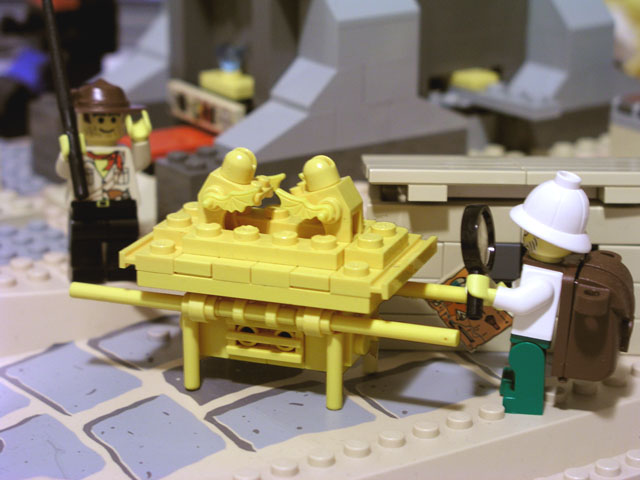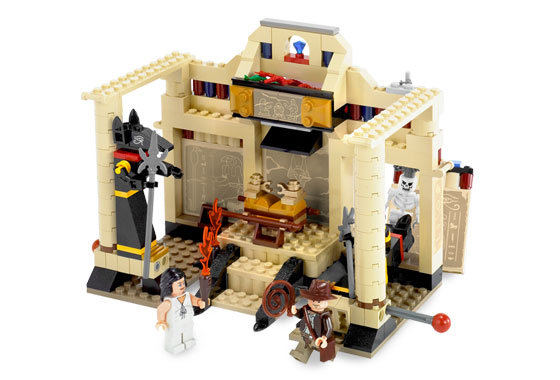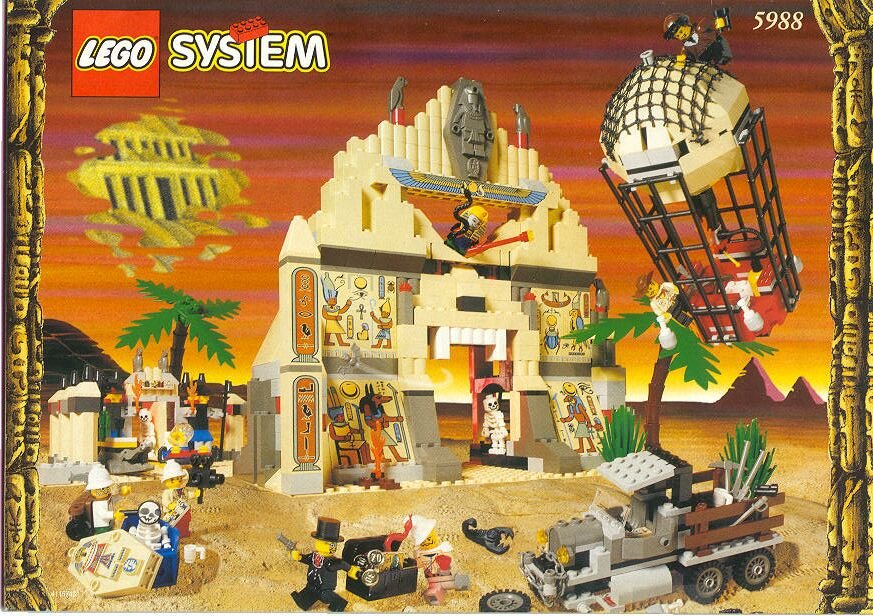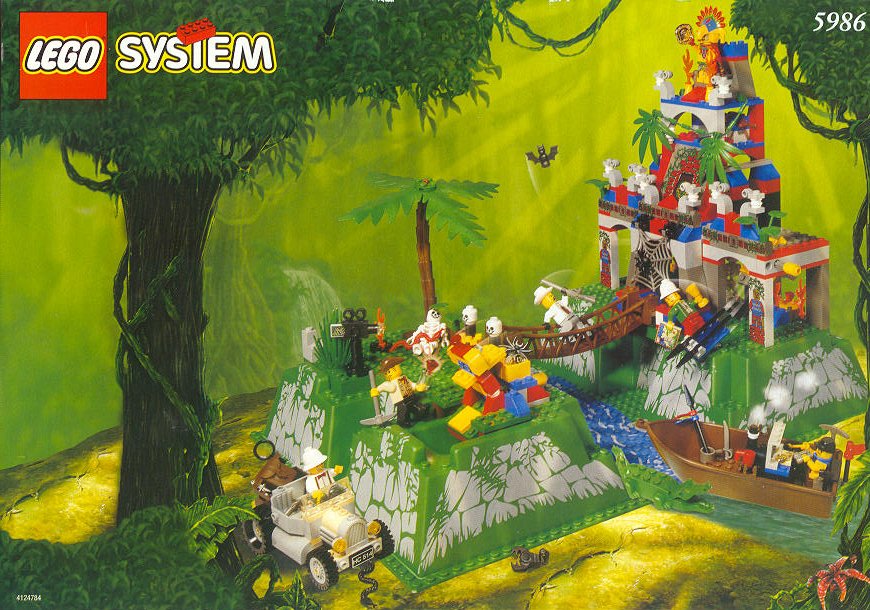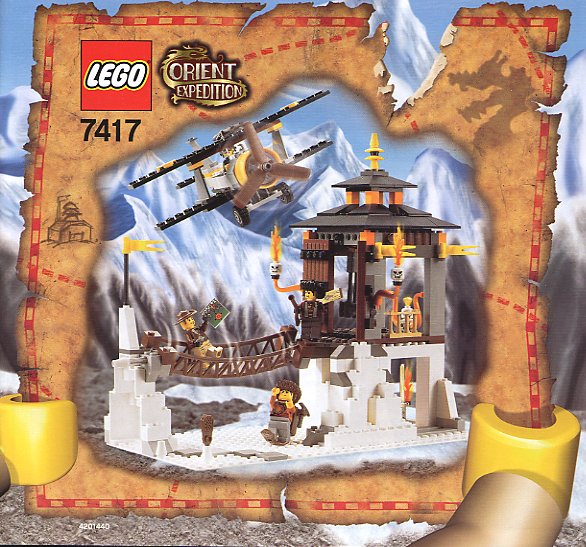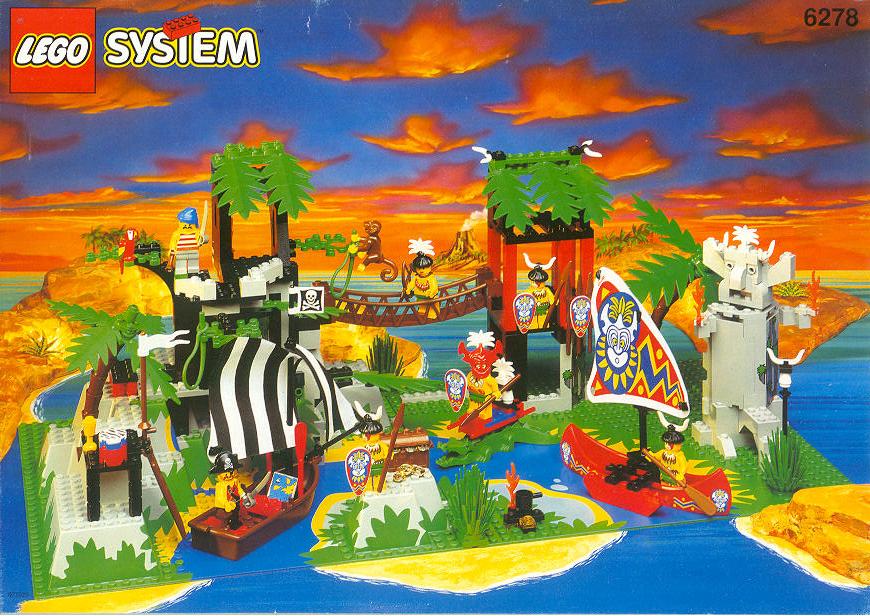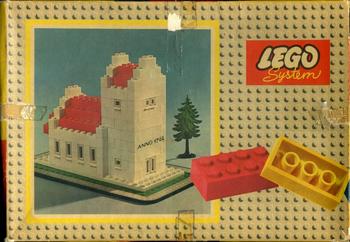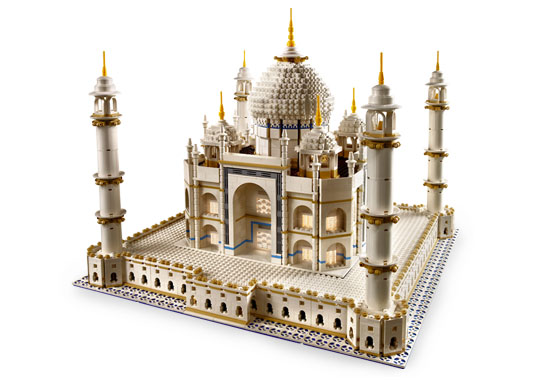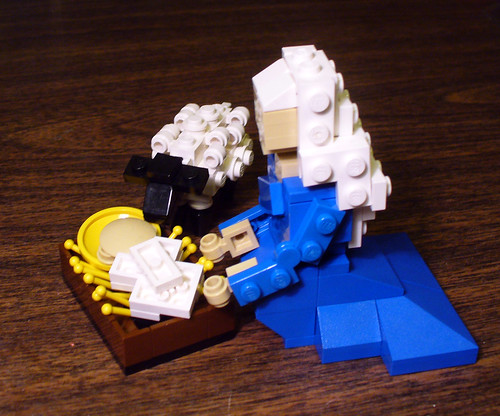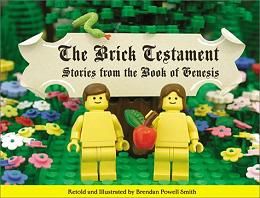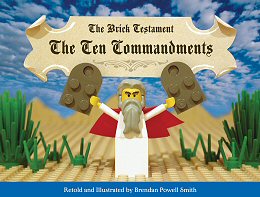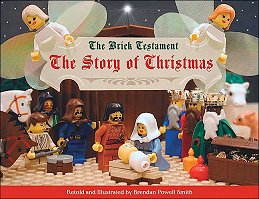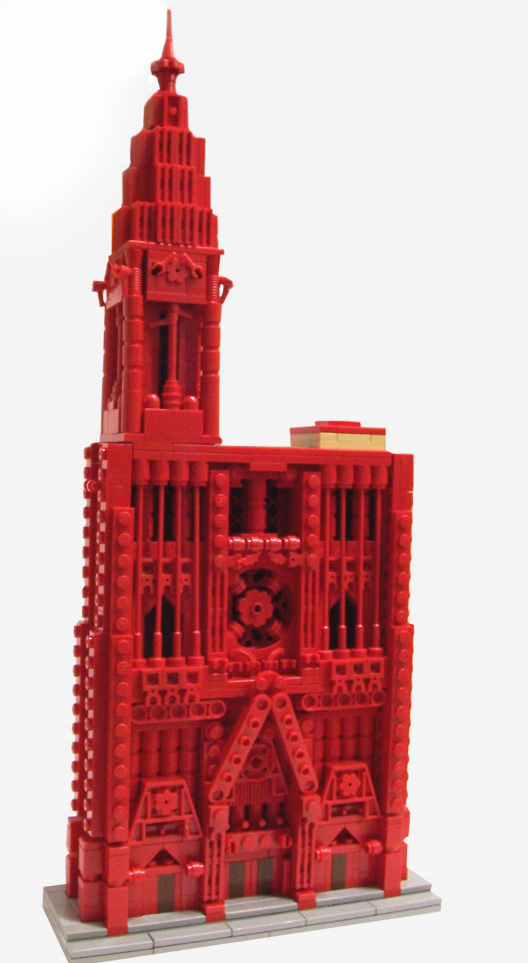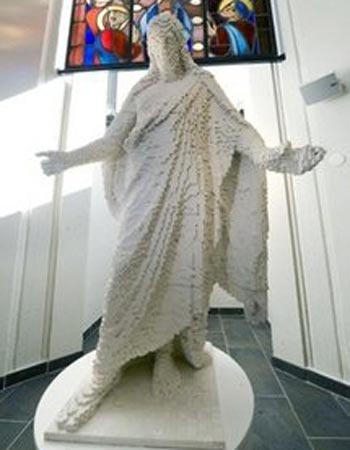Note: In this and future posts on the Brick Testament I'll probably include a lot of my own opinion and not just straight reportage. I'm a huge fan of Brendan's work, but I also come at the source material from a different religious view, so disagree with him at times. Back when I was active on Lugnet I'd post my thoughts on both the LEGO building and the religious interpretation for each new installment, so I'll do that here. Hopefully I can get Brendan to respond as well to start a dialog in this forum.Apocalyptic literature became an important part of both Jewish and Christian traditions from around 500 BC to 300 AD. These groups were facing trying times - the nation of Israel was destroyed by outside forces and many of the people were in exile in the Babylonian captivity, and even after they returned to their homeland they faced incursions by the Greeks and the Romans. In the first few centuries of Christianity the followers of this new faith faced many persecutions. These people found comfort in apocalyptic literature. The word "apocalypse" comes from the Greek for removing a veil. This literature told them that, yes, times were bad and would get much worse, but there was some ultimate triumph in which the righteous would be saved and things would be much better (messianic era or heavenly reward for the two traditions, respectively). Examples of this literature can be found in places like the book of Daniel or in various extra-canonical works, but the most well-known apocalypse is the book of Revelation, found at the end of the Christian Bible. This book is full of allegory and fantastic imagery, and Brendan Powell Smith has taken on the challenge of illustrating these in the
latest installment of the Brick Testament.
Brendan illustrates the introduction to the book in
Future Revealed to Guy on Tiny Mediterranean Island.

LEGO thoughts: Probably the best achievement in LEGO building here is the image shown above, with John coming ashore and a microscale building and ship in the background in soft focus to give a sense of perspective. I also really like how he did the
Son of Man and the seven lampstands-a good realization of the poetic language there. To me the first few images, where the Father tells the Son tells an angel tells John seemed a little redundant and wasteful - there may have been a more efficient way to accomplish the same thing in a tighter fashion. I also disliked how in a couple of images Brendan removed the minifig's head from his body to try to make it look like he was bending at the neck (minifigs have very limited poses in some ways) - elsewhere in the BT Brendan does this with figs who are dead, so here it looks to me more like John has a broken neck.
Interpretation thoughts: One interpretive quibble - Brendan implies that John chose to go to Patmos on an evangelistic mission. Most people think he was exiled there in persecution for preaching about Christ. I realize, though, that either of these is a fair interpretation of the bare phrase that John was there "because of the word of God and the testimony about Jesus" without any extra-biblical tradition.
The next section of Revelation contains the letters to the seven churches of Asia Minor, in which Christ rebukes them for their failings and promises rewards for their faithfulness. Brendan illustrates these in
Children to be Killed as Warning.

LEGO thoughts: Good choice of figures here, especially for Jezebel and the other woman. Using doors as a table works well, as do other details in the building interiors. One thing that I feel doesn't work is the image where red dots were Photoshopped in as some sort of disease - I always prefer true LEGO solutions to this sort of thing. I also feel that there were some missed opportunities here. Most of the promises of reward were ignored (more below), but the faithful being given white robes, a stone, food, etc. might have made good LEGO illustrations. I could also see some humorous possibilities in giving each a new name, being made a pillar in the temple of God, or in the faithful sitting with Jesus on his throne as he with the Father (I could imagine the Christian sitting on Christ's lap who was on the Father's lap). Another passage that might have been fun to illustrate is Christ saying to the church at Laodicea that he would spew them out of his mouth.
Interpretation thoughts: I do think that some of Brendan's bias peeks through here. I believe (and I would love his feedback on this) that he feels that the God of the Bible is wrathful and capricious, and Christians need to confront this aspect of his character. As such Brendan tends to illustrate those passages with punishments or slaughters with great enthusiasm (e.g. his illustrations of the conquest of the Promised Land in Joshua and some of the tribulations in Revelation, below), but not passages showing reward. So the focus of this section of the BT is a very literal interpretation of Jezebel and her promised punishment, rather than noting how these seven churches each have their negatives and positives and God's rebuke to the former and encouragement of the latter.
In the next section of the book, John is taken up in a vision, as illustrated in
Heaven Revealed. Even Christians who have not studied Revelation would recognize this section as it is the basis for much of the lyrics of the hymn
Holy, Holy, Holy.

LEGO thoughts: The real tour de force here is the scene where all of the creatures of land and sea praise the Lord, especially the illusion of the boat floating on top of the sea and the shark, fish and diver swimming underwater. I also really like the door in the sky, the choir of angels, and the saints casting down their golden crowns upon the glassy sea. The real failing here is the depiction of the four beasts with multiple eyes and the Lamb that was slain. I don't think these measure up to how other creatures are depicted in the BT (though doors as wings on the eagle is a good idea).
The Lamb goes on to open the seven seals upon the scroll in three stories:
God Tortures, Kills Billions,
Terrorized Humans Wish for Death and
144,000 Jews Saved.



LEGO thoughts: The first story has a good interpretation of the Four Horsemen of the Apocalypse. I was kind of disappointed we didn't get a group photo of them, perhaps flying through the sky down toward the earth. Death on his pale horse may be my favorite - that skeletal horse is such a perfect element. Other nice build elements include the scales and the famished figs (I'm going to have to borrow that idea). Some good humor with the wild animals - landshark and switchblade monkey, especially.
The second story is largely perfect. I actually thought the Statue of Liberty, which Brendan used as his thumbnail, was the weakest of these. Very ingenious with the sky rolled up like a scroll (Brendan uses a poster for his background sky, so here he just rolls it up) and I really love the falling stars and the earthquake scene. The rockscaping in the hiding place is also great, though perhaps the ground shouldn't just be a flat baseplate.
The third story makes use of a LEGO built-globe. There have been variations on this idea in the past, but this one is very well done. In the group shot of the Jews there is one guy in the second row with a beard and black hat that is just perfect for a Hasid.
Interpretation thoughts: Not to sound like a broken record, but again I perceive a bias here, with the image of a capricious God who just decides to torture and kill billions of people for fun. For instance, the setting aside of a fraction of the Jews looks like a concentration camp, with people being branded with hot irons, rather than saving them from destruction. As I mentioned above, apocalyptic literature is written to people who are undergoing great persecution. It is ultimately for them a comfort rather than a horror movie. That said, as a LEGO builder I always enjoy some plastic destruction, so maybe I should be generous and say that Brendan enjoys building these sorts of things more than everyone sitting around singing praises.
Finally for now, the opening seventh seal brings seven angels to blow their trumpets in
God Burns One Third of Earth and
God Poisons Humans, Sealife. This gets us to the end of Revelation 8, so the next trumpets will pick up in the next installment of the BT.


LEGO thoughts: The first story has a couple of particularly effective images. "Crashes of thunder, flashes of lightning, and an earthquake" is well done, with an innovative way to make lightning - much nicer than his
earlier solution. Most striking, though, is the picture of the burned earth. Oh, the golden censer filled with fire is also well done.
The second story also has some nice build details. I'm a little torn on the splash, but really like how he did angels knocking out the sun, moon and stars. As always, his interiors are great, with the people dying of bitter water (note the blue plume used as spilled water). My favorite may be the microscale cruise ship sinking - I'm a sucker for microscale. The one real fail here is the giant star Wormwood.
Interpretation thoughts: Pretty much the same as the last set of stories, so I won't repeat myself.













